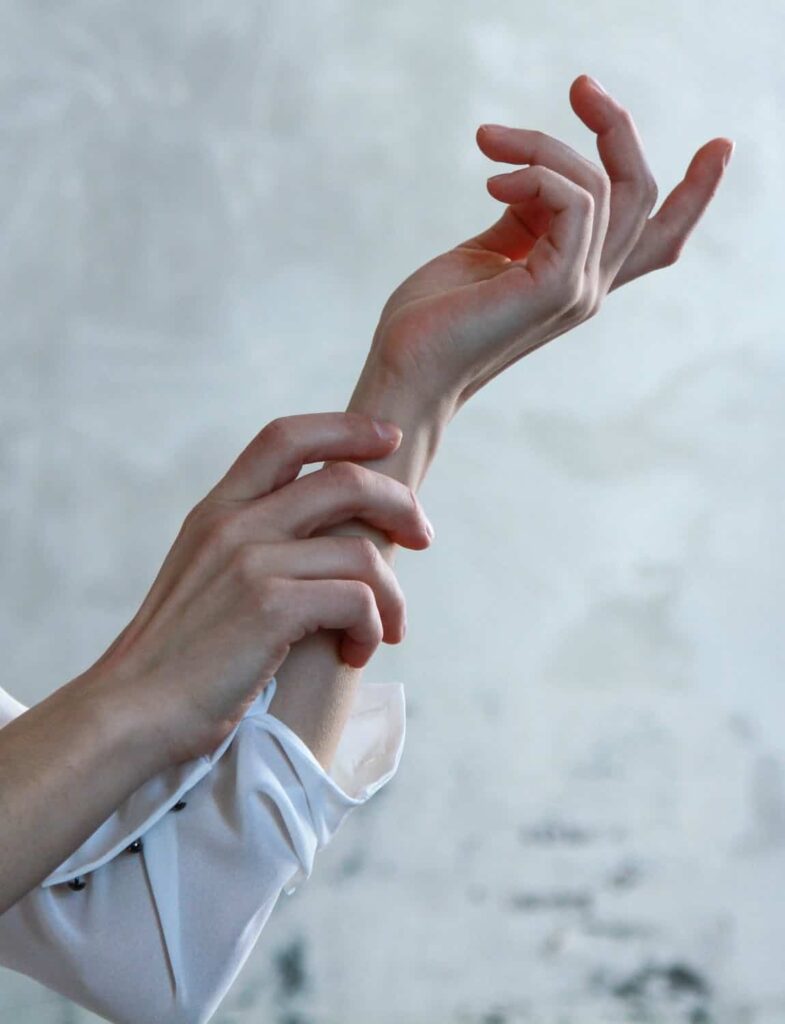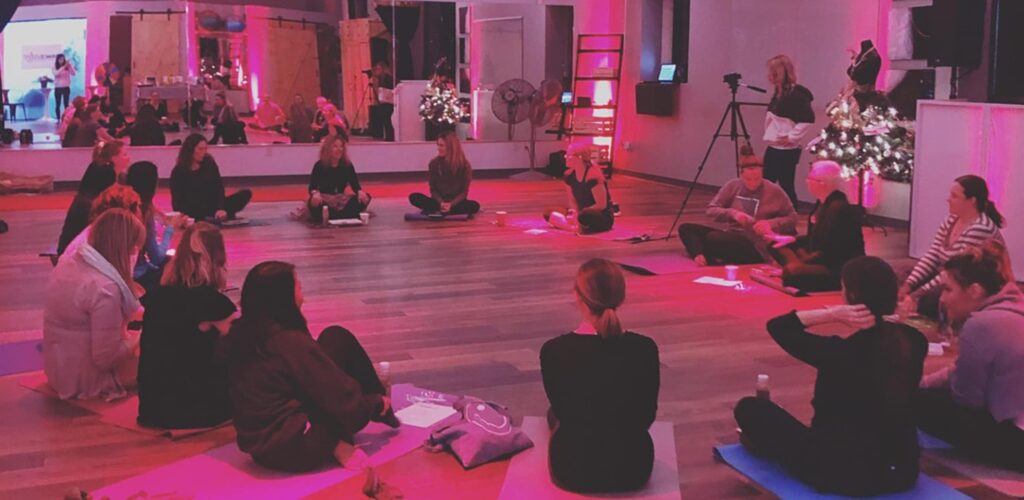by urban-acupuncture | Feb 5, 2020 | Massage Therapy
Sports Massage
 Swimming, biking, yoga, weight lifting, Zumba or spin class, running, or even a walk outside: medical experts all agree that regular exercise is an important element of staying healthy! Yet regardless of how you choose to stay fit—competing in local road races, joining an adult sports team, or hitting the gym a few times a week—maintaining a regular exercise routine can easily be undermined by physical fatigue, soreness and pain, and even injury.
Swimming, biking, yoga, weight lifting, Zumba or spin class, running, or even a walk outside: medical experts all agree that regular exercise is an important element of staying healthy! Yet regardless of how you choose to stay fit—competing in local road races, joining an adult sports team, or hitting the gym a few times a week—maintaining a regular exercise routine can easily be undermined by physical fatigue, soreness and pain, and even injury.
In fact, staying healthy and fit often requires more than just exercise: proper nutrition, active recovery, injury avoidance, and rest are all equally important. And incorporating sports massage therapy, along with good eating and sleep habits, into your exercise routine can help as well. Sports massage is an excellent way to minimize pain and discomfort from DOMS (delayed-onset muscle soreness), relax and rejuvenate overworked muscles, increase flexibility and mobility, reduce recovery times between workouts, and even prevent injury.
Sports Massage: What Is It?
Sports massage is a type of massage therapy designed to facilitate relaxing and rehabilitating recovery in those muscles and soft tissues that have been stressed by an active, athletic lifestyle. Depending on the needs of each unique patient, sports massage usually involves a variety of massage techniques and concentrates on specific muscle groups. And don’t let the word “relaxing” confuse you: sports massage is not designed to for full-body relaxation like other massage techniques: when performed properly, a sports massage can get a bit uncomfortable as it works out tightness, inelasticity, and lack of flexibility in active muscle groups!
Just as each patient is unique, each sports massage is just as unique. Based on his/her assessment of your specific massage requirements, your licensed massage therapist will develop a customized massage plan designed to target exactly those muscle groups and areas of soft tissue damage that require it. Your specific sports massage therapy may involve techniques such as:
- Trigger point massage: involves repeatedly manipulating trigger points (or knots) within muscles with patterns of isolated pressure and release
- Myofascial release: involves relaxing and stretching the fascia, or the connective tissue around the bones, muscles, and tendons
- Muscle energy: actively contracting the largest muscular groupings can stretch, relax, and strengthen tight, inflexible muscles
- Soft tissue release: passive, active, and/or weight-bearing techniques can stretch out and relax stiffness and tightness in the tendons, fascia, and muscle
Sports Massage: Benefits
In general terms, the biggest benefit of sports massage is enhanced athletic performance. More specifically, sports massage offers a number of benefits that, when taken together, add up to help you maintain your exercise routine and recover faster between workouts. Sports massage can:
- Help relieve muscle tension, discomfort, and pain
- Promote faster post-workout recovery time to decrease time between workouts
- Improve healing for existing injuries and prevent common overuse injuries
- Improve muscle elasticity flexibility, elasticity, and range of motion
- Improve blood flow for increased muscle growth and endurance performance
- Reduce blood pressure and heart rate
And the benefits of sports massage aren’t just physical! Studies have shown that sports massage can have added psychological benefits, including lowered anxiety, improved outlook and mood, and better quality of sleep. So to support your physical fitness, your mental health, and your health and overall well-being, schedule your sports massage today!
For more information about how acupuncture, massage therapy and other treatments can help you, please contact the Urban Acupuncture Center Board Certified Licensed Acupuncturist’s team at Indianola Ave, Clintonville (614) 725-2488 | Main St, Westerville (614) 426-4406 or click here. Taking new patients in and around greater Columbus, Ohio.
by urban-acupuncture | Feb 1, 2020 | Acupuncture Columbus
Can Acupuncture Treat Skin Conditions?*
 The skin is the body’s largest organ, serving both to protect us from the environment around us and to provide clues to what we can’t see underneath. In other words, the health of our skin can often be a reflection of our overall health and thus, skin disorders, whether chronic or acute, may be symptomatic of an underlying imbalance in the body. This holistic approach underpins the success of acupuncture in treating many difficult skin conditions. By identifying and focusing on the root cause of the problem, acupuncture can treat the visible symptom: an uncomfortable, itchy, unpleasant skin problem.
The skin is the body’s largest organ, serving both to protect us from the environment around us and to provide clues to what we can’t see underneath. In other words, the health of our skin can often be a reflection of our overall health and thus, skin disorders, whether chronic or acute, may be symptomatic of an underlying imbalance in the body. This holistic approach underpins the success of acupuncture in treating many difficult skin conditions. By identifying and focusing on the root cause of the problem, acupuncture can treat the visible symptom: an uncomfortable, itchy, unpleasant skin problem.
Acupuncture works by addressing systemic imbalances and weakness deep within the body. When treating skin conditions, acupuncture stimulates specific points along the body in order to simultaneously activate both the immune system and the endocrine systems. This simple action increases blood flow to key systems throughout the body and regulates proper hormonal balances. Put more simply, acupuncture stimulates and strengthens the body’s own natural defenses, enabling it to more effectively heal itself!
As with any medical approach, the first step is to identify the root of the problem. The acupuncturist will conduct a thorough evaluation, looking at and feeling your skin and tongue while asking many wide-ranging questions about your skin condition, your overall health, and your diet, exercise, and lifestyle routines. Once a course of treatment has been developed—every treatment is uniquely developed to address the specific needs of each individual patient—the acupuncturist will place sterile, high-grade needles at key points around the body to activate specific acupuncture points. In some cases, heat may be directly or, more commonly, indirectly applied to the acupuncture points for increased stimulation (moxibustion therapy).
What Skin Conditions Can Acupuncture Treat?
Acupuncture has been used successful to treat a wide variety of different skin conditions*, both acute and chronic, including:
- Acne
- Rosacea
- Psoriasis
- Perioral Dermatitis
- Herpes (zoster [shingles] and simplex)
- Eczema (including pomphlyx)
- Lichen Planus
- Viral Warts
- Chronic Hives
- and more
Whether acute or chronic, we understand that many patients have been suffering from the discomfort and embarrassment of problematic skin for a long time and want instant relief. It’s important to note that acupuncture is not magic! Addressing the underlying imbalances at the root of many of these difficult skin problems can take time, persistence, and patience. Moreover, acupuncture may be only one part of a comprehensive, holistic treatment approach.
The goal of acupuncture is to enable the body to heal itself by ensuring inner strength and wellness. Improving stress management, improving sleep problems, and addressing digestive issues can help promote overall wellness, thus contributing to a successful resolution of a difficult skin condition. Changes in diet, exercise, and other lifestyle habits may play a vital role in your treatment plan, as may Chinese herbal medicine and also, in some cases, modern medicine like prescription medications and/or topical ointments.
For more information about how acupuncture and other treatments can help you, please contact the Urban Acupuncture Center Board Certified Licensed Acupuncturist’s team at Indianola Ave, Clintonville (614) 725-2488 | Main St, Westerville (614) 426-4406 or click here. Taking new patients in and around greater Columbus, Ohio.
*Disclaimer: Results may vary and cannot be guaranteed. Before starting treatment, including acupuncture, for any skin condition, patients should see a dermatologist and/or a primary care physician.
by urban-acupuncture | Jan 13, 2020 | Community
 An energizing evening, where you will walk away with an insight into how coaching & deep self inquiry can transform your life & health.
An energizing evening, where you will walk away with an insight into how coaching & deep self inquiry can transform your life & health.
Soul Sessions Date And Time:
Wed, February 12, 2020 | 7:00 PM – 8:00 PM EST
Location:
About this Event
- Have you ever wanted to compliment a stranger and didn’t, because you felt a bit scared?
- Have you ever wanted to speak up in a meeting, and didn’t, because you were worried what people would think? Or, worse, did you speak up and then replay it, over and over, in your head?
- Do you feel anxious, stressed, and have a tendency to overthink?
- Have you ever pretended everything is ok in your relationship rather than saying how you really feel?
We all yearn for more confidence to express ourselves lovingly and honestly. When we do, we feel an ease and a freedom that transforms the way we live.
Most of us have two lives. The life we live, and the un-lived life within us.
Our bodies have a tendency to reveal our un-lived life. It might be surprising to hear that your thoughts inform your physical health. What we think about often manifests in physical symptoms. Since you’re already a believer in taking care of your body, we want to help you take care of your mind, too.
Sarah will teach you two life changing skills that will transform every area of your life, that will close the gap between the life you’re living and your un-lived life within. You will reflect, grow, positively impact your health, have fun, and build connection and community.
Can’t wait to see you there.
REGISTER NOW
 Sarah Moore, founder of Moore Soul Sessions, is a Certified Professional Life Coach based out of Philadelphia. With a focus on honest, authentic, and deep connection, Sarah works to connect with her clients on a level that allows them to rediscover themselves and realize their full potential.
Sarah Moore, founder of Moore Soul Sessions, is a Certified Professional Life Coach based out of Philadelphia. With a focus on honest, authentic, and deep connection, Sarah works to connect with her clients on a level that allows them to rediscover themselves and realize their full potential.
I have spent 11+ years coaching women at every level of an organization from Senior Executives to Emerging Leaders, from start-ups to global brands. Previous clients include Facebook, LinkedIn and Salesforce. My varied background in industries such as retail, newspaper, and oil and gas, and extensive years living abroad, all have one thing in common; every decision was born out of passion and purpose. With that in mind, the bottom line is, I’m coaching people to know what they want, have the courage to say it, and pursue it. I want you to feel even more confident than you do now, to speak up with your loved ones, in meetings and board rooms, to communicate effectively across all levels of your organization, and to be at peace with who you are.
Accreditation:
- Certified Professional LIfe Coach- MA, ACC, CPC, ELI-MP
- M.A. Comparative Literature and Culture
- Associate Certified Coach
- Certified Professional Coach
- Energy Leadership Index Master Practitioner
- B.A. (Hons) Hispanic Studies and Linguistics
by urban-acupuncture | Jan 5, 2020 | Massage Therapy
Craniosacral Massage Therapy
 Also referred to as Cranial Sacral Therapy, or CST, Craniosacral Massage Therapy is a specific type of bodywork, or massage, designed to treat a variety of conditions by normalizing disruptions in the flow of cerebrospinal fluid, a critical element of the central nervous system.
Also referred to as Cranial Sacral Therapy, or CST, Craniosacral Massage Therapy is a specific type of bodywork, or massage, designed to treat a variety of conditions by normalizing disruptions in the flow of cerebrospinal fluid, a critical element of the central nervous system.
In order to understand how Craniosacral Massage Therapy works, it’s important to understand the central nervous system, one of the body’s most critical systems. The central nervous system (CNS) is composed primarily of the head (the brain), the spinal column, the sacrum (the triangular bone located in the lower back), and the membranes and fluid that surround and protect it. Compression, distortions, and blockages within this critical fluid due to injury or stress can prevent the nervous system from functioning properly. Through gentle hands-on manipulation of the bones in the skull, spine, and pelvis, Craniosacral Massage Therapy can remove these blockages, restoring the normal flow of the central nervous system and enhancing the body’s ability to heal.
Craniosacral Massage Therapy is completely non-invasive and involves extremely gentle pressure, usually no more than 5 grams. That’s about the amount of pressure you would feel if a nickel were placed on your body; that’s how gentle Craniosacral Massage Therapy is. Yet just because it’s gentle, doesn’t mean it isn’t effective. In fact, CST has become a common therapeutic tool for massage therapists, physical therapists, osteopaths, and chiropractors. It can be performed as a stand-alone treatment, or incorporated into a comprehensive treatment plan utilizing a variety of techniques, depending on the specific needs of each patient.
What Does Craniosacral Massage Therapy Treat?
By relieving compression and blockages in the head, neck, and back (the core of the CNS), Craniosacral Massage Therapy can be a highly effective therapeutic technique to soothe pain and reduce (and potentially even eliminate) emotional and physical tension and stress.
It can also be incorporated into treatment for a variety of specific conditions such as:
- Concussion and traumatic brain injury
- Chronic and/or acute neck and/or back pain, such as whiplash
- Constipation and Irritable Bowel Syndrome (IBS)
- Insomnia and sleep disorders
- Fibromyalgia
- Temporomandibular joint disorder, or TMJ (inflammation of the joint connecting the lower jaw to the skull)
- Mood disorders such as anxiety and depression
- Difficult pregnancies
Craniosacral Massage Therapy may be appropriate for individuals of all ages, including infants and children. Every treatment is customized depending on the specific condition(s) and/or symptoms each patient is experiencing. Some patients may find relief after just a few sessions; other patients with more chronic conditions may require on-going treatment or the incorporation of CMT into a comprehensive treatment plan.
What Happens During a Craniosacral Massage Therapy Session?
Most Craniosacral Massage sessions last between 45-60 minutes and take place in a warm, comfortable, safe massage room. Patients are usually asked to wear loose, thin, comfortable clothing and lie on their back on a massage table. The gentle manual manipulation generally begins at the head and sacrum, allowing the therapy to identify areas of blockage for further gentle manipulation. Indeed, regardless of exactly why most people seek out Craniosacral Massage Therapy, most—if not all—patients find the therapy sessions deeply relaxing and restorative.
For more information about how acupuncture, massage therapy and other treatments can help you, please contact the Urban Acupuncture Center Board Certified Licensed Acupuncturist’s team at Indianola Ave, Clintonville (614) 725-2488 | Main St, Westerville (614) 426-4406 or click here. Taking new patients in and around greater Columbus, Ohio.
by urban-acupuncture | Jan 2, 2020 | Art, Community, What we sell at our clinic..
About The Artist
Paul Klein first saw the world through his grandfather’s multi-decade collection of National Geographic magazines. Each yellow framed cover inspired Paul’s eye for photography and adventure. Paul would accompany his father on photography assignments and began to learn the technical side of photography. At a young age, Paul won several awards for his art, reinforcing his passion for visual storytelling.
Paul’s work has been published in the *Spring Street* annual literary/visual arts journal along with *Columbus Dispatch* special edition publications. After graduating from the Ohio State University, Paul started his photography business focusing on weddings, commercial and architecture.
Paul and his wife enjoy exploring the world together, including long trips in their travel trailer exploring the National Parks.
…………………………………………………………………………………………………………………
For more information about how acupuncture and other treatments can help you, please contact the Urban Acupuncture Center Board Certified Licensed Acupuncturist’s team at Indianola Ave, Clintonville (614) 725-2488 | Main St, Westerville (614) 426-4406 or click here. Taking new patients in and around greater Columbus, Ohio.
 Swimming, biking, yoga, weight lifting, Zumba or spin class, running, or even a walk outside: medical experts all agree that regular exercise is an important element of staying healthy! Yet regardless of how you choose to stay fit—competing in local road races, joining an adult sports team, or hitting the gym a few times a week—maintaining a regular exercise routine can easily be undermined by physical fatigue, soreness and pain, and even injury.
Swimming, biking, yoga, weight lifting, Zumba or spin class, running, or even a walk outside: medical experts all agree that regular exercise is an important element of staying healthy! Yet regardless of how you choose to stay fit—competing in local road races, joining an adult sports team, or hitting the gym a few times a week—maintaining a regular exercise routine can easily be undermined by physical fatigue, soreness and pain, and even injury. 
 The skin is the body’s largest organ, serving both to protect us from the environment around us and to provide clues to what we can’t see underneath. In other words, the health of our skin can often be a reflection of our overall health and thus, skin disorders, whether chronic or acute, may be symptomatic of an underlying imbalance in the body. This holistic approach underpins the success of acupuncture in treating many difficult skin conditions. By identifying and focusing on the root cause of the problem, acupuncture can treat the visible symptom: an uncomfortable, itchy, unpleasant skin problem.
The skin is the body’s largest organ, serving both to protect us from the environment around us and to provide clues to what we can’t see underneath. In other words, the health of our skin can often be a reflection of our overall health and thus, skin disorders, whether chronic or acute, may be symptomatic of an underlying imbalance in the body. This holistic approach underpins the success of acupuncture in treating many difficult skin conditions. By identifying and focusing on the root cause of the problem, acupuncture can treat the visible symptom: an uncomfortable, itchy, unpleasant skin problem. An energizing evening, where you will walk away with an insight into how coaching & deep self inquiry can transform your life & health.
An energizing evening, where you will walk away with an insight into how coaching & deep self inquiry can transform your life & health. Sarah Moore, founder of Moore Soul Sessions, is a Certified Professional Life Coach based out of Philadelphia. With a focus on honest, authentic, and deep connection, Sarah works to connect with her clients on a level that allows them to rediscover themselves and realize their full potential.
Sarah Moore, founder of Moore Soul Sessions, is a Certified Professional Life Coach based out of Philadelphia. With a focus on honest, authentic, and deep connection, Sarah works to connect with her clients on a level that allows them to rediscover themselves and realize their full potential. Also referred to as Cranial Sacral Therapy, or CST, Craniosacral Massage Therapy is a specific type of bodywork, or massage, designed to
Also referred to as Cranial Sacral Therapy, or CST, Craniosacral Massage Therapy is a specific type of bodywork, or massage, designed to